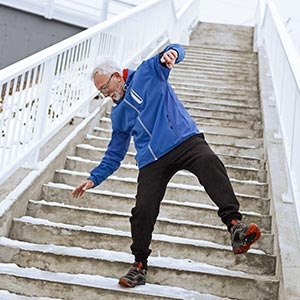I Feel Unsteady on My Feet, How Can I Prevent Falling?
As we journey through life, we find that certain aspects change with age. One of these changes is an increased risk of falling due to gait and balance issues. Aging brings about a multitude of factors that impact our ability to maintain stability while walking. In this blog, I will highlight some of the reasons why gait and balance become a challenge as we get older and discuss the potential risks associated with these issues. Furthermore, I will introduce Lexington Podiatry as an option for evaluation and potential solutions to enhance confidence and safety during ambulation.
- Age-related physiological changes:
Numerous physiological changes occur as we age, and some impact our gait and balance. These changes include decreased muscle strength, flexibility, and coordination, making it harder to maintain stability while walking.
- Decline in sensory perception:
Ageing affects our sensory systems, such as vision, hearing, and proprioception (body awareness). Impaired sensory perception can lead to misjudging distances, tripping on uneven surfaces, or being unable to react quickly to sudden obstacles.
- Loss of bone density:
Osteoporosis, commonly associated with aging, can lead to weakened bones and an increased risk of fractures. A fear of potential fractures can cause individuals to adopt an altered gait pattern, leading to balance issues.
- Neurological changes:
The central nervous system undergoes changes over time, resulting in decreased processing speed and coordination. This can hinder the brain's ability to send precise signals to muscles, impacting balance and coordination during ambulation.
- Chronic health conditions:
Conditions like arthritis, Parkinson's disease, stroke, and diabetes can contribute to gait and balance problems. These conditions affect muscle strength, joint mobility, and coordination, making it more challenging to maintain stability while walking.
Risks of Balance Issues:
Balance issues can lead to severe consequences, especially when combined with inclement weather conditions. Some of the risks associated with balance problems include:
- Increased risk of falls:
Unstable gait can lead to falls, resulting in injuries such as bone fractures, sprains, and head trauma. Falls can significantly impact an individual's quality of life and independence.
- Fear of falling:
Experiencing falls or fearing potential falls can lead to a loss of confidence and increased anxiety while walking. This fear may limit participation in activities and social interactions, potentially leading to social isolation.
- Difficulty navigating outdoor environments:
Inclement weather, such as rain, snow, or icy surfaces, pose significant challenges for individuals with balance issues. Uneven terrain and slippery surfaces increase the risk of falls and injuries. Walking outside can become stressful and limit mobility.
Is there anything that can be done to help me walk with more confidence?
After a thorough exam, we can present potential solutions for those facing gait and balance issues. Our specialized evaluation can help identify the underlying causes to develop accurate treatment strategies. Some of the solutions we offer include:
- Lightweight balance braces:
We can provide lightweight and adjustable balance braces to help improve stability during ambulation. These braces facilitate enhanced confidence and reduce the risk of falls. Most insurances cover such braces. We will check your insurance coverage so you will know before leaving the office.
- Enhancing flexibility:
Through focused exercises and therapies, we aim to improve flexibility, muscle strength, and coordination. Such improvement contributes to safer and more confident ambulation, enabling individuals to perform daily activities with ease. You will be fitted with a stretching splint (billed to your insurance) to increase flexibility in the comfort of your own home. Often with the use of this brace we can prevent the need for physical therapy (dependent on severity).
As we age, it's essential to acknowledge and address the increased risk of falling due to gait and balance issues. By understanding the multifold reasons behind these challenges, we can take proactive steps to improve our stability and reduce the potential risks associated with balance problems. We hope to serve as a valuable resource for evaluation and tailored solutions to enhance stability, flexibility, and confidence during ambulation. By seeking our support and incorporating targeted interventions, we can maintain an active and independent lifestyle for years to come.

